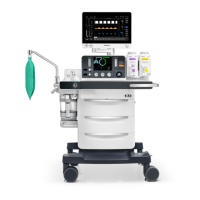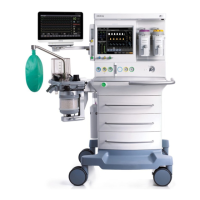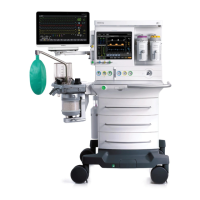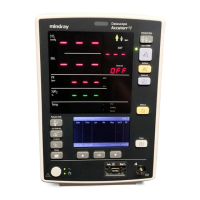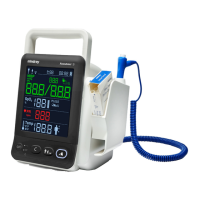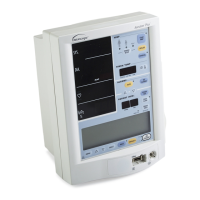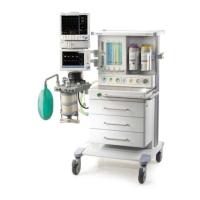A5/A3™ Operating Instructions 046-003777-00 1 - 5
Product Description General System Overview
1.1.6 Anesthesia Ventilator
The A5/A3 ventilator offers multiple ventilation modes: Volume Control Ventilation (VCV),
Synchronized Intermittent Mandatory Ventilation-Volume Control (SIMV-VC), Pressure Control
Ventilation (PCV), Pressure Support (PS) ventilation, and Manual ventilation.
The A5 offers additional ventilation modes, which include Pressure Control Ventilation (PCV) with and
without Volume Guarantee (VG), and Synchronized Intermittent Mandatory Ventilation-Pressure
Control (SIMV-PC).
1.1.7 Breathing System
A portion of the patient circuit is integrated into an assembly block called the breathing system. The
system contains a temperature controller, which warms the block to a temperature of 35ºC typical at
20ºC ambient temperature to limit the formation of water condensate. The breathing system can be
swiveled horizontally up to 50 degrees for user convenience.
The breathing system provides access to the APL valve and breathing bag along with a view of the
airway pressure gauge. The APL valve has a single turn knob that provides a clear view of the manual
breathing pressure setting. The absorber assembly incorporates a cam-lock device that opens and
closes to provide access to the absorber canister. Either a Pre-Pak or loose fill CO
2
absorbent can be
used. Two water traps that can be drained are located on the CO
2
absorber assembly and on the
breathing system block.
NOTE: Operating the A5/A3 with a full water trap in the breathing system
block does not allow the water to condense appropriately. The trap
should be removed and emptied when filled with water.
Two (2) flow sensors in the breathing system measure inspired and expired gases for control and
monitoring. Inspired oxygen concentration is monitored via a fuel-cell type sensor. Breathing
pressure is monitored with both a PAW gauge (mechanical) and electronic gauge. The breathing
system can be swiveled for ease of positioning. A leak test port is provided to allow for leak testing
during startup.
The main pneumatic components of the breathing system are as follows:
• Inspiratory Valve (passive)
• Expiratory Valve (passive)
• Airway Pressure Limiting Valve (APL)
• Connection for O
2
Sensor
•CO
2
Absorber Assembly
• Bellows Assembly
• Auto/Manual bag switch
• Bag arm
•PAW Gauge
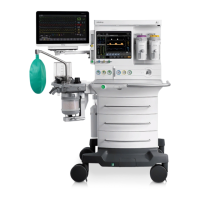
